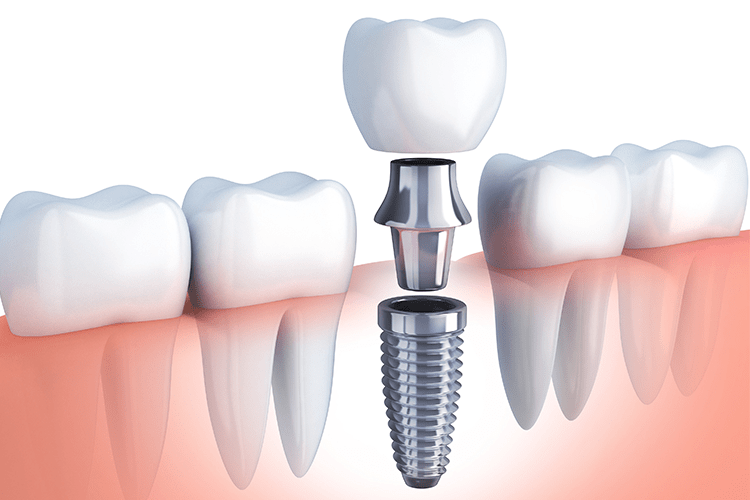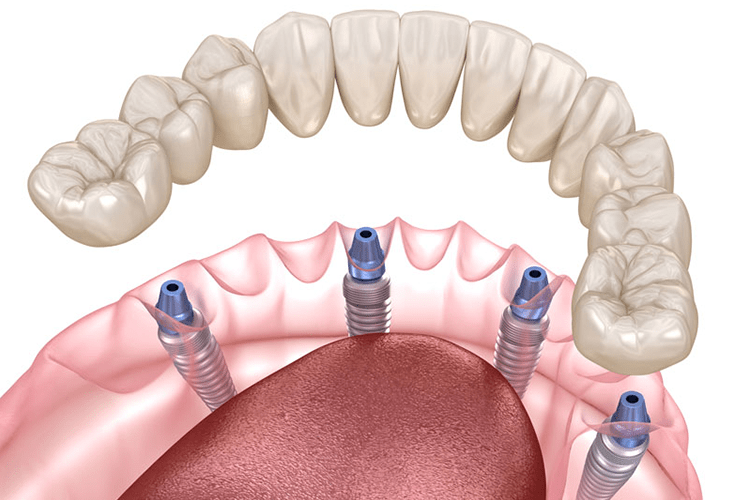After receiving dental implants, you’ll want to take care of your investment. Once they have been surgically placed by a trained professional, dental implants can last you a lifetime. However, you still need to take a few steps to ensure that your implants and mouth in general stay healthy and clean.
Like all cosmetic dentistry treatments, the results and longevity of your treatment are dependent on two people: you and your dentist.
We always promise to do the best on our part, but poor care will lead to damaged teeth, no matter how good of a job your dentist does.
If you want your implants to last a long time, there are some basic rules you need to follow.

How to Clean Single Implants
1. Use A Soft-BrIstled Toothbrush
Soft bristles cause little damage to your gums and remove tartar and plaque then medium or hard bristles. Electric toothbrushes have been used to prevent and remove bacteria from teeth.
Manual toothbrushes produce a more significant number of brush strokes than a human hand. Whether you use a manual or electric brush, keep in mind that its bristles should be soft.
2. Brush At Least TwIce Per Day
After waking up in the morning, brushing eliminates morning breath and removes bacteria formed in the mouth overnight. Brushing before bed removes bacteria that build up throughout the day and reduces the risk of plaque buildup and decay overnight.
3. Use A Water Flosser
A water flosser prevents and removes bacteria from a pocket up to the depth of 4 mm. It does not replace regular floss. Aggressive use of water floss can create gum recession and periodontal abscess in people with periodontitis.
4. Use Crown And BrIdge Floss
Crown and bridge floss are specifically designed to scrub under and around the dental implant dentistry. Rigid ends enable you to insert the floss between dental implants on the gumline and pull it to the other side. You can then bend it against the surface of the implant-supported denture and rub it in the side.
5. Use Low-AbrasIve Toothpaste
People who lack abrasive elements should use toothpaste that uses baking soda and stain remover agents. These materials can wear on acrylic and remove the glaze from porcelain implant supported dentures.
6. Brush Under And Around The Dental Implant Crown
Bacteria and plaque may accumulate below and around the implant supported dentures crown to increase the risk for peri-implantitis. To access these areas, try using an angle-necked toothbrush or an inter-brush with a thin head.

How to Clean All-on-4 Implants
In all-on-4 dental implant dentistry, dentistry users also have to follow the same steps as those used to clean a single tooth implant. But only a few more steps have to be added, which is further explained below:
1. Use A Rubber-TIp StImulator
Water flossers come with rubber-tip steelers that can gently remove food particles trapped between the bridge and the gum line. Use this attachment on your water flosser at least once per day to remove food debris and bacteria from all-on-4.
2. Use A Sulcus Brush
A sulcus brush is about one-third of a regular toothbrush width and is useful in cleaning the part of the bridge that transitions into soft tissue.
How to Clean Overdentures
1. Brush Overdentures DaIly
Use a denture brush to gently brush your overdenture’s underscores at least once per day. A denture brush typically has two heads: a soft-bristled flat head for smooth surfaces and a single-tuft head with taped bristles that can reach hard-to-reach areas. Do not use toothpaste as it may scratch the surface of the overdenture due to a dull finish.
2. Soak Dentures OvernIght
When you go to bed, place your overdenture in a cleaning solution specifically made for dentures, and soak them overnight. This will keep your overdentures clean and can also help them maintain their shape.
3. RInse Thoroughly WIth Water
Rub your overdenture thoroughly with water before placing it back in your mouth. It reduces the risk for side effects after pain resolution, burning, and vomiting when soaked in the overdenture cleaning solution.
4. Inspect Your Overdentures Regularly
Inspect your overdenture every day carefully to ensure the O-ring, locator cap, and clip are in place and in good condition. Consult your dentist immediately if any of these parts look bad or are missing.
Be Cautious When Flossing
Flossing around your dental implant is an essential part of your oral care routine, but it’s crucial to be gentle. You won’t be able to floss around your dental implant as you would around your natural teeth. Flossing too aggressively can contribute to peri-implantitis, a condition in which the gum and bone tissue become inflamed around your dental implant.
Don’t floss too far underneath the gumline: instead, floss gently on either side of your dental crown. Your dentist can demonstrate exactly how to floss around your dental implant, and may recommend a water flosser for best results.
CALL OR WRITE TO US IF YOU ARE STRUGGLING WITH ANY QUESTIONS. WE ARE HAPPY TO HELP.






